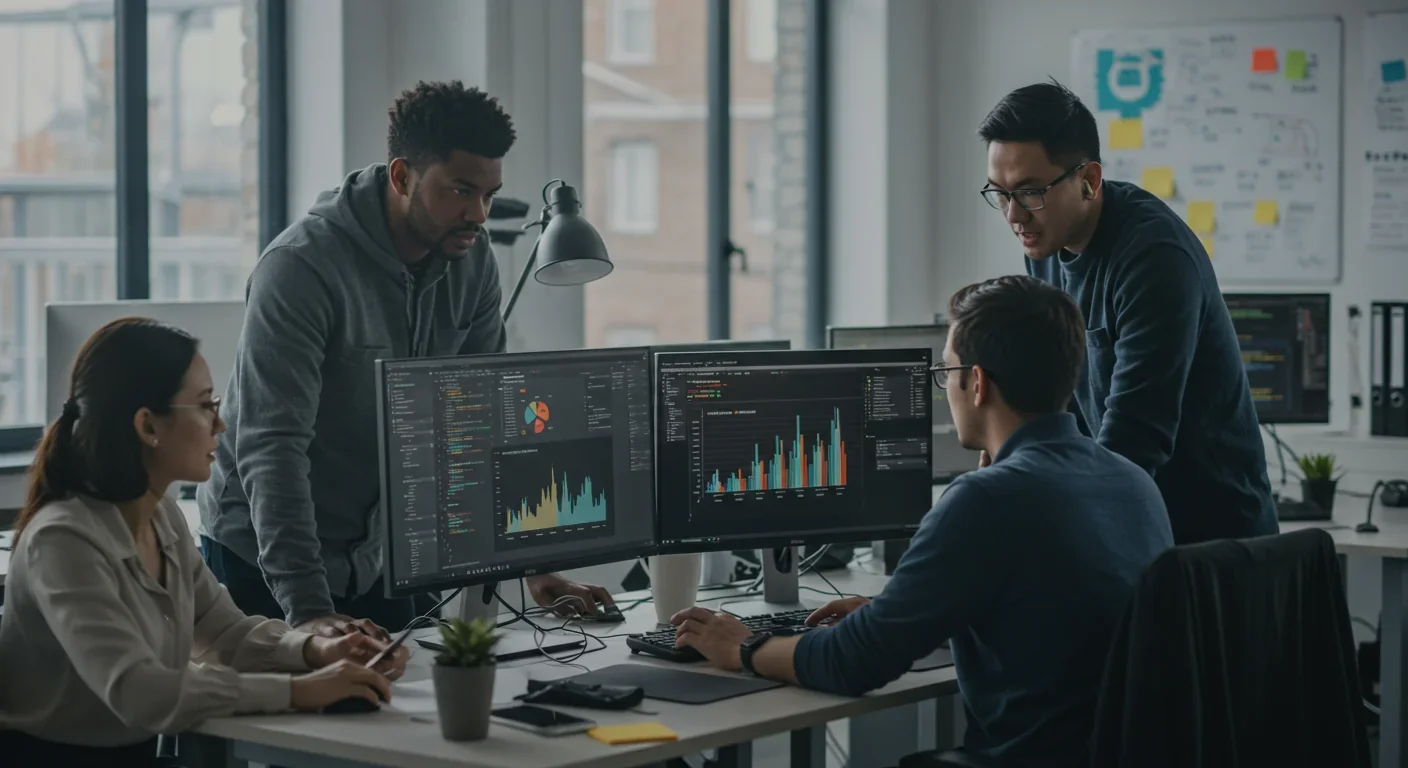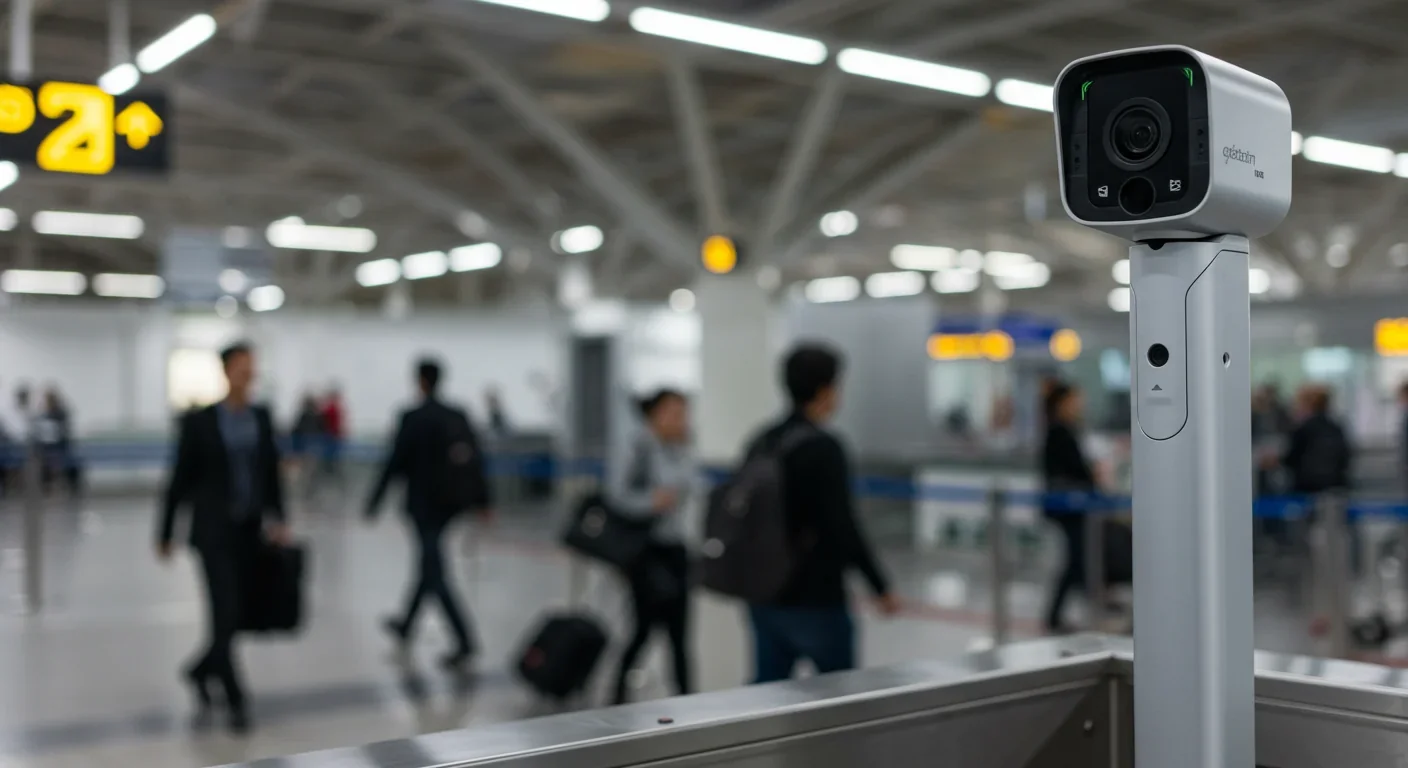AI Training Data Copyright Crisis: Lawsuits & Solutions

TL;DR: AI systems inherit human biases from training data and amplify them through feedback loops, affecting millions in hiring, lending, and facial recognition. Solutions exist—diverse data, fairness metrics, algorithmic debiasing—but require commitment from developers, companies, and regulators to implement.

Imagine applying for a job and being rejected before a human ever sees your resume. Picture getting denied for a loan despite a solid credit history. Or consider being misidentified by facial recognition at an airport gate. These aren't hypothetical scenarios anymore - they're happening right now, powered by algorithms that have quietly absorbed decades of human prejudice. The AI systems we're building to make fairer decisions are often amplifying the very biases we hoped they'd eliminate. And the scariest part? Most people have no idea it's happening.
Machine learning bias doesn't appear out of nowhere. It's inherited, like a family heirloom nobody asked for. When we train AI systems, we feed them historical data - loan applications from the past fifty years, hiring decisions from countless companies, arrest records spanning decades. The problem is that this data reflects our biased history.
Think about it this way: if you trained an AI on hiring data from the 1960s, it would learn that engineering jobs overwhelmingly go to men. Feed it mortgage approval data from redlined neighborhoods, and it learns to deny loans in certain zip codes. The machine doesn't know it's learning prejudice. It just sees patterns.
According to research from Chapman University, there are three main types of bias in ML systems. Data bias occurs when training datasets don't represent the real world fairly. Algorithmic bias happens when the model's design amplifies certain patterns over others. Societal bias creeps in through the assumptions and decisions of the humans building these systems.
But here's where it gets really concerning. AI doesn't just inherit bias - it amplifies it. When algorithms optimize for engagement or accuracy based on biased training data, they can create feedback loops that intensify polarization. A system trained to predict "successful" job candidates might learn to favor certain demographics, then reinforce those patterns with each hiring cycle.
The mechanism is insidious. Machine learning models look for correlations in data. They find them. They act on them. And because they process millions of decisions faster than any human could, they can entrench bias at scale in ways we never could before.
Few stories illustrate AI bias more powerfully than the facial recognition crisis. Joy Buolamwini, a researcher at MIT, discovered something troubling while working on a project: the facial recognition software couldn't detect her face. It worked fine when she put on a white mask. Her research revealed that commercial facial recognition systems had error rates as high as 35% for darker-skinned women, compared to less than 1% for lighter-skinned men.
This wasn't a small oversight. These systems were being deployed at airports, by police departments, in security systems worldwide. People were being misidentified, wrongly flagged, denied access - all because the training datasets overwhelmingly featured lighter-skinned faces.
The technical explanation is straightforward but damning. Most facial recognition datasets historically included far more images of white faces than Black or Asian faces. The algorithms got really good at distinguishing between different white faces because they had more examples to learn from. They struggled with other faces because they simply hadn't seen enough variation.
IBM's research on AI bias found that when datasets aren't diverse, models develop what researchers call "representation bias." The algorithm essentially becomes an expert in the majority group and a novice at everything else.
This has real consequences. In 2020, Robert Williams became the first known case of someone wrongfully arrested due to facial recognition misidentification. He spent 30 hours in detention because an algorithm couldn't tell Black faces apart accurately. Since then, several major cities have banned facial recognition technology entirely, acknowledging that the bias problem remains unsolved.
In 2018, Reuters broke a story that sent shockwaves through Silicon Valley. Amazon had been developing an AI recruiting tool to automate resume screening. The company discovered a massive problem: the algorithm was systematically downgrading resumes from women.
The system had been trained on ten years of resumes submitted to Amazon - predominantly from men. It learned that male candidates were more likely to be hired. So it began penalizing resumes that contained words like "women's" (as in "women's chess club captain") or graduates of all-women's colleges.
Amazon scrapped the project, but the damage to AI's reputation was done. More importantly, it revealed how easily bias can slip into systems that seem objective. The engineers weren't trying to build a sexist algorithm. They just fed it historical data without considering what that data encoded.
This case perfectly demonstrates what researchers call "proxy discrimination." The algorithm learned to use gender-correlated features (certain words, activities, schools) as shortcuts for decision-making, even when gender wasn't explicitly included in the model. According to analysis from Tengai, this type of indirect bias is often harder to detect and fix than direct discrimination.
The hiring bias problem extends far beyond Amazon. Studies have shown that resume screening algorithms can discriminate based on names (penalizing ethnic-sounding names), zip codes (disadvantaging candidates from certain neighborhoods), and even employment gaps that disproportionately affect women who take maternity leave.

Perhaps nowhere is algorithmic bias more consequential than in credit scoring and lending decisions. These algorithms determine who gets mortgages, business loans, credit cards - fundamental tools for building wealth. And the research shows they're riddled with bias.
The problem starts with historical data. For decades, credit scoring systems have exhibited racial bias, not through explicit consideration of race but through proxy variables. Zip code, education, employment history - all correlate with race due to historical segregation and discrimination.
When AI systems are trained on this data, they learn these patterns. A study cited by Bankrate found that traditional credit scoring models disadvantage Black and Hispanic borrowers even when controlling for creditworthiness. The algorithms pick up on where you live, what kind of phone you use, even your social connections.
Then there's the amplification effect. Once an algorithm denies someone credit, that denial becomes part of their credit history. It makes future applications harder. The system creates a self-fulfilling prophecy: initial bias leads to denial, which reinforces the pattern that led to bias in the first place.
Accessible Law research highlights another troubling dimension - lack of transparency. When a human loan officer denies your application, you can ask why and challenge the decision. When an algorithm does it, you often can't get a meaningful explanation. The model is too complex, or the company claims it's proprietary. You're just... denied.
This opacity makes it almost impossible to identify bias, let alone fix it. And because these systems process millions of decisions, they can perpetuate discrimination at a scale that would be impossible for human loan officers.
Understanding how AI amplifies bias requires looking at the technical mechanisms that power machine learning. It's not enough to say "garbage in, garbage out" - though that's part of it. The amplification happens through several interconnected processes.
First, there's optimization pressure. Machine learning models are designed to maximize accuracy on their training data. If that data contains biases, the model learns to replicate them perfectly because that's what "accurate" means in that context. A hiring algorithm trained on biased hiring decisions will learn to make biased predictions because that's what matches the historical pattern.
Second, there's feature correlation. Algorithms find connections humans might miss. Sometimes that's valuable. But it also means they can learn to use seemingly innocent variables as proxies for protected characteristics. An algorithm might learn that people who list certain hobbies or attended certain schools are more likely to be a certain race or gender, then use that information even when race and gender aren't in the dataset.
Third, there's scale and speed. As research from Encord points out, AI systems can make thousands of biased decisions in the time it would take a human to make one. This doesn't just perpetuate bias - it accelerates it. Patterns get reinforced faster. Consequences compound quicker.
Fourth, there are feedback loops. When biased AI systems make decisions that affect the real world, those decisions generate new data that gets fed back into the system. A study on algorithmic amplification found that engagement-driven algorithms can increase polarization by 30% or more through these feedback mechanisms.
Finally, there's false objectivity. Because AI seems mathematical and neutral, people trust it more than they would a human decision-maker. This "automation bias" means biased algorithmic decisions face less scrutiny, allowing them to cause more damage before anyone notices something's wrong.
So how do we fix this? The good news is that researchers and practitioners have developed concrete strategies for detecting and mitigating bias. The bad news is that implementation requires commitment, resources, and a willingness to prioritize fairness over convenience.
The foundation is diverse data collection. If your training data doesn't represent the population your AI will serve, you're building bias from the start. This means actively seeking out underrepresented groups, checking demographic distributions, and sometimes creating synthetic data to fill gaps. Medium's analysis emphasizes that data diversity must be intentional - it rarely happens by accident.
Next comes bias auditing - systematically testing how your AI performs across different demographic groups. This isn't optional anymore. Some jurisdictions now require algorithmic impact assessments before deployment. Companies like IBM and Google have developed toolkits that help developers measure disparate impact, check for proxy discrimination, and identify problematic correlations.
Fairness metrics provide quantitative ways to measure bias. Shelf.io's research outlines several approaches: demographic parity (equal outcomes across groups), equalized odds (equal error rates), and individual fairness (similar individuals get similar outcomes). The catch is these metrics can conflict - optimizing for one might worsen another. Choosing which fairness definition to use is itself an ethical decision.
There's also the technical approach of algorithmic debiasing - modifying the training process to reduce discriminatory patterns. Techniques include reweighting training data, adding fairness constraints to the optimization function, or post-processing model outputs to equalize outcomes. Latitude's comparison of fairness metrics shows that these methods can significantly reduce bias without destroying model performance.
But technical solutions alone aren't enough. We need organizational accountability. That means diverse teams building AI systems, ethics review boards, transparent documentation of model decisions, and real consequences when bias is discovered. Fashion Sustainability Directory research found that companies with mandatory bias testing caught and fixed problems before deployment at much higher rates.
Perhaps most importantly, we need explainable AI. When an algorithm makes a decision that affects someone's life, they deserve to understand why. Techniques like LIME (Local Interpretable Model-agnostic Explanations) and SHAP (SHapley Additive exPlanations) can reveal what factors drove an AI's decision, making it possible to identify when bias played a role.

The question of responsibility for AI bias is messy. When an algorithm discriminates, who's to blame? The data scientists who built it? The executives who deployed it? The society that generated the biased training data in the first place?
The answer is probably "all of the above," but in different ways. Developers and data scientists have a responsibility to implement bias testing, use fairness metrics, and push back when asked to deploy systems they know are problematic. This requires technical knowledge but also moral courage.
Companies and organizations deploying AI need to invest in proper testing, diverse teams, and ongoing monitoring. As Lumenova's analysis points out, treating fairness as an afterthought inevitably leads to biased systems. It needs to be part of the design process from the start.
Regulators and policymakers are beginning to step in. The EU's AI Act, for instance, requires high-risk AI systems to undergo conformity assessments before deployment. Several US states have passed laws requiring algorithmic transparency in hiring and lending. But regulation lags technology - we're still figuring out how to enforce these rules.
Consumers and citizens also have a role. Demanding explanations for algorithmic decisions, supporting companies that prioritize fairness, and advocating for regulation all help create pressure for change. The more people understand that AI bias isn't inevitable - it's a choice - the harder it becomes for companies to ignore.
Academic researchers contribute by developing new fairness metrics, studying real-world impacts, and holding companies accountable through independent audits. Organizations like the Algorithmic Justice League, founded by Joy Buolamwini, work to raise awareness and push for regulatory change.
The reality is that addressing AI bias requires coordination across all these groups. No single stakeholder can solve it alone. But that's not an excuse for inaction - it's a call for collective responsibility.
We're at a critical juncture. AI is being integrated into more decision-making systems every day - healthcare diagnosis, criminal justice, education, employment. If we don't address bias now, we risk automating discrimination at a scale humanity has never seen.
But there's reason for hope. The conversation around AI fairness has shifted dramatically in just a few years. What was once a niche academic concern is now a boardroom priority. Tools for detecting and mitigating bias are improving. Regulation is catching up, slowly. And a new generation of AI practitioners is being trained to think about fairness from day one.
The technical solutions exist. We have methods for collecting diverse data, measuring fairness, debiasing algorithms, and explaining decisions. What we need now is the will to implement them - even when it's expensive, even when it slows development, even when it means admitting our systems are flawed.
For data scientists and ML engineers, that means making fairness testing as routine as performance testing. For managers and executives, it means allocating resources to bias mitigation and supporting teams who raise concerns. For policymakers, it means crafting regulations that protect people without stifling innovation. For consumers, it means demanding transparency and accountability.
The algorithms we build today will shape society for decades. They'll determine who gets opportunities, who gets surveillance, who gets second chances. We can build systems that amplify our prejudices, or we can build systems that help us overcome them. The choice is ours - but only if we make it consciously, deliberately, and soon.
Because here's the thing about algorithmic bias: unlike human prejudice, it doesn't fade with generational change. It doesn't evolve with social progress. An AI trained on biased data from 2024 will still be making biased decisions in 2044 unless someone intervenes. The bias we code today becomes the discrimination of tomorrow, frozen in silicon and scaled to billions.
We have the knowledge to do better. The question is whether we have the courage to insist on it.

Recent breakthroughs in fusion technology—including 351,000-gauss magnetic fields, AI-driven plasma diagnostics, and net energy gain at the National Ignition Facility—are transforming fusion propulsion from science fiction to engineering frontier. Scientists now have a realistic pathway to accelerate spacecraft to 10% of light speed, enabling a 43-year journey to Alpha Centauri. While challenges remain in miniaturization, neutron management, and sustained operation, the physics barriers have ...

Epigenetic clocks measure DNA methylation patterns to calculate biological age, which predicts disease risk up to 30 years before symptoms appear. Landmark studies show that accelerated epigenetic aging forecasts cardiovascular disease, diabetes, and neurodegeneration with remarkable accuracy. Lifestyle interventions—Mediterranean diet, structured exercise, quality sleep, stress management—can measurably reverse biological aging, reducing epigenetic age by 1-2 years within months. Commercial ...

Data centers consumed 415 terawatt-hours of electricity in 2024 and will nearly double that by 2030, driven by AI's insatiable energy appetite. Despite tech giants' renewable pledges, actual emissions are up to 662% higher than reported due to accounting loopholes. A digital pollution tax—similar to Europe's carbon border tariff—could finally force the industry to invest in efficiency technologies like liquid cooling, waste heat recovery, and time-matched renewable power, transforming volunta...

Humans are hardwired to see invisible agents—gods, ghosts, conspiracies—thanks to the Hyperactive Agency Detection Device (HADD), an evolutionary survival mechanism that favored false alarms over fatal misses. This cognitive bias, rooted in brain regions like the temporoparietal junction and medial prefrontal cortex, generates religious beliefs, animistic worldviews, and conspiracy theories across all cultures. Understanding HADD doesn't eliminate belief, but it helps us recognize when our pa...

The bombardier beetle has perfected a chemical defense system that human engineers are still trying to replicate: a two-chamber micro-combustion engine that mixes hydroquinone and hydrogen peroxide to create explosive 100°C sprays at up to 500 pulses per second, aimed with 270-degree precision. This tiny insect's biochemical marvel is inspiring revolutionary technologies in aerospace propulsion, pharmaceutical delivery, and fire suppression. By 2030, beetle-inspired systems could position sat...

The U.S. faces a catastrophic care worker shortage driven by poverty-level wages, overwhelming burnout, and systemic undervaluation. With 99% of nursing homes hiring and 9.7 million openings projected by 2034, the crisis threatens patient safety, family stability, and economic productivity. Evidence-based solutions—wage reforms, streamlined training, technology integration, and policy enforcement—exist and work, but require sustained political will and cultural recognition that caregiving is ...

Every major AI model was trained on copyrighted text scraped without permission, triggering billion-dollar lawsuits and forcing a reckoning between innovation and creator rights. The future depends on finding balance between transformative AI development and fair compensation for the people whose work fuels it.